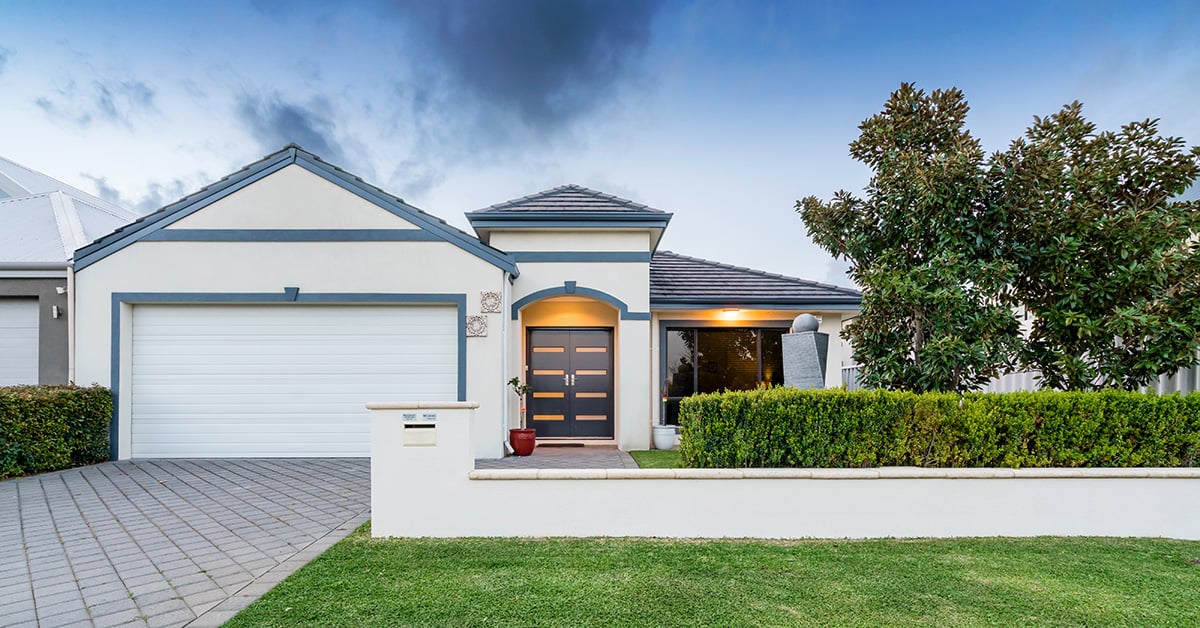A Guide To Selling a House With a Mortgage

For many Australians, the idea of selling a house with a mortgage can feel overwhelming. Questions like “can I sell a house with a mortgage?” or “what happens to my loan when I sell?” often arise. If you have a mortgage and are looking to sell, the good news is that it’s entirely possible. However, there are a few steps and considerations to keep in mind to ensure a smooth and hassle-free process.
A good place to start is to have your property appraised to find out how much it is worth. This is something LJ Hooker can help with. Then, you can work out how much will be left on your mortgage and the amount needed to fund your next home.
Can you sell a house with a mortgage?
First things first, can you sell a house with a mortgage? The simple answer is yes, you can. Most Australian homeowners sell their properties while still paying off their loans. However, the process involves fulfilling the obligations tied to your loan, such as paying off the remaining amount upon the sale of your property.
This guide will walk home sellers and mortgage holders through how to navigate this process along with all the other considerations required when selling mortgaged properties.
How to sell your house if you have a mortgage
Once you’ve received an appraisal from your real estate partner, you should notify your bank or lender to let them know you plan on selling your property, as they hold the Certificate of Title on your home. In other words, they have a formal interest in it. This gives them the authority to sell the property if you default on your repayments. It also means they want to be paid back in full when you decide to move.
You will be asked to fill in a Discharge of Mortgage form which can be found on your bank or lender's website. It will ask for details such as:
- Borrowers name
- Guarantor name
- Solicitor's name
- Home loan account numbers
- Line of credit
Be sure to read all the information and understand it before lodging, as it gives the bank authority to start the process.
Remember, it can take between 14 and 21 days for a mortgage to be discharged, so it is important to factor this into your timeline. You will still be responsible for making mortgage repayments right up until the sale is finalised.
Obtaining a settlement or closing statement is also a good tip, as it outlines the closing costs and can give you an idea of any profit.
Your bank will arrange with your solicitor or conveyancer for the outstanding amount on your mortgage to be paid at settlement – this will be taken out of the proceeds of your sale price.
Your lender will also register the discharge of the mortgage with the Land Titles Office in your State or Territory. This means that property is free of any 'encumbrance', which is a legal term referring to restrictions that may prevent a sale. Discharge fees can range from $0 to $550.
Five steps to selling a house with a mortgage
Step 1 – Understand your mortgage terms
Before listing your property for sale, the first step is to familiarise yourself with the terms of your mortgage. Different lenders have different conditions, so it’s important to know exactly where you stand.
Here are three questions to ask your bank or lender to help you understand your mortgage terms:
What is my mortgage balance?
Mortgage balance refers to the amount of money you owe on the loan you used to purchase your home. This includes the principal amount and any accrued interest.
Your bank or lender will be able to disclose the exact figure with you upon request.
Are there any break costs or fees?
If you plan on paying off a huge chunk of your mortgage, be prepared to incur additional fees from your bank. These are known as 'break costs' because you are breaking the term of the home loan.
It only applies to fixed-rate mortgages, and the amount varies depending on how much you owe and the length of the loan. Check with your lender, as it may not be high enough to dissuade you from switching lenders.
Can my mortgage be transferred to a new property?
Moving house doesn’t have to mean moving banks and filling in reams of new paperwork. Home loans have 'portability', meaning they can simply be transferred onto the next property.
It means faster turnaround times and avoiding potential upfront fees when applying for another loan. It also allows you to keep your current loan details, rates, repayments and set-ups.
You’ll need what is known as a 'substitution of security'. This removes the mortgage from your current property and carries it over to the new home.
Step 2 – Calculate your home equity
Equity is the difference between your home’s current market value and your outstanding mortgage balance.
Understanding your equity is essential, as it determines how much profit you’ll potentially retain after paying off the loan. If your equity is low or negative (owing more than your home is worth), additional steps may be needed to cover the shortfall.
Any shortfall in paying off your mortgage on settlement will need to be made up from personal savings or selling assets, such as a car. If you cannot make up the difference, your lender will ask your mortgage insurer to cover the difference. They will then try to recoup the outstanding debt from you.
A property appraisal is the best way to determine your home’s current market value and then subsequently calculate your home equity.
Step 3 – Engage a real estate agent
Still haven’t had your property appraised by a trusted real estate agent? You’ll need to remedy that as soon as possible before moving past this step. Luckily that’s where we come in. LJ Hooker is Australia’s most iconic real estate brand. Our agents are there to make the transaction process as smooth as possible. Whether you are selling a property with a mortgage or not, the most important step before going onto the market is to know just how much it is worth.
The journey to find your next home starts with a property appraisal. Our agents at LJ Hooker are able to give you a realistic guide of what you can expect your home to fetch on the market. This is based on comparative data of recent sales, market insight and experience. Contact us today for a free property appraisal.
Step 4 – List your property
After you make your home ready, LJ Hooker will list it for sale. After conducting open homes and private inspections, offers from potential buyers should start coming in.
Step 5 – Accept an offer
Once a suitable offer is made, you can work with your real estate agent to accept it. Before you do though, it’s important to consider two factors.
Your settlement period should align with your mortgage payoff deadlines, and you need to decide on the minimum price you’d accept to comfortably pay off the remaining loan and fees.
What happens if I sell my house for less than the mortgage?
Australian homeowners have benefited from booming prices in recent years, but the property market doesn’t always keep rising.
While it's uncommon for the outstanding balance on a mortgage to be higher than the value of a home, it does happen. Purchasing at the top of the housing cycle, heavily redrawing on your home loan, paying too much for a property or securing a property with a low deposit can put you at risk of what is known as having 'negative equity'.
What other fees should you factor in?
On top of banking fees, you will also set aside funds to pay for conveyancing, marketing and agents fee or commission. Be sure to budget around $800 to $2000 to cover the legal costs of the sale, which is handled by a conveyancer or solicitor. Costs vary depending on which states and territories you reside in.
Your real estate agent may ask for a flat fee or operate off a tiered commission. These methods will be discussed and agreed upon before any contracts are signed.
Your agent is also in the best position to advise on a marketing budget. Campaigns are based on where you live, your type of dwelling and market performance. It often includes both digital and printed media.
It may cover:
- Digital brochures
- Real estate portal listings
- Social media posts
- Professional photography
- Drone footage
- Signage
- Copywriting
- Advertising
Selling a house with a mortgage might seem like a daunting task, but with LJ Hooker in your corner and with the right preparation, it can be a very straightforward process.
If you still have questions or need professional guidance through your property sale, don’t hesitate to reach out to your local LJ Hooker team.
Get started on selling your home with a free property appraisal from LJ Hooker
Book an appraisalDISCLAIMER - The information provided is for guidance and informational purposes only and does not replace independent business, legal and financial advice which we strongly recommend. Whilst the information is considered true and correct at the date of publication, changes in circumstances after the time of publication may impact the accuracy of the information provided. LJ Hooker will not accept responsibility or liability for any reliance on the blog information, including but not limited to, the accuracy, currency or completeness of any information or links.
Share


